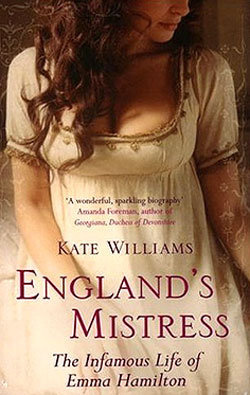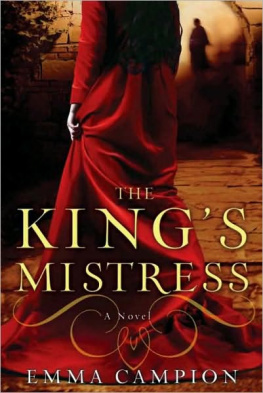The Life & Letters of
T HE S TORY OF A DMIRAL N ELSON AND THE M OST F AMOUS W OMAN OF THE G EORGIAN A GE
Hugh Tours
THE LIFE AND LETTERS OF EMMA HAMILTON
The Story of Admiral Nelson and the Most Famous Woman of the Georgian Age
First published by Victor Gollancz, London, 1963.
This edition published in Great Britain in 2020 by Frontline Books, an imprint of Pen & Sword Books Ltd, Yorkshire - Philadelphia
Copyright Hugh Tours
ISBN: 978-1-52677-043-1
eISBN: 978-1-52677-044-8
Mobi ISBN: 978-1-52677-045-5
The right of Hugh Tours to be identified as Author of this work has been asserted by him in accordance with the Copyright, Designs and Patents Act 1988. A CIP catalogue record for this book is available from the British Library. All rights reserved.
No part of this book may be reproduced or transmitted in any form or by any means, electronic or mechanical including photocopying, recording or by any information storage and retrieval system, without permission from the Publisher in writing.
Pen & Sword Books Ltd incorporates the imprints of Pen & Sword Archaeology, Air World Books, Atlas, Aviation, Battleground, Discovery, Family History, History, Maritime, Military, Naval, Politics, Social History, Transport, True Crime, Claymore Press, Frontline Books, Praetorian Press, Seaforth Publishing and White Owl
For a complete list of Pen & Sword titles please contact:
PEN & SWORD BOOKS LTD
47 Church Street, Barnsley, South Yorkshire, S70 2AS, UK.
E-mail:
Website: www.pen-and-sword.co.uk
Or
PEN AND SWORD BOOKS,
1950 Lawrence Roadd, Havertown, PA 19083, USA
E-mail:
Website: www.penandswordbooks.com
Contents
Foreword
Acknowledgements
Chapter 1 Childhood
Chapter 2 The Temple of Health
Chapter 3 Up Park
Chapter 4 Paddington
Chapter 5 Naples
Chapter 6 Marriage
Chapter 7 Nelson
Chapter 8 The Journey Home
Chapter 9 London
Chapter 10 Merton
Chapter 11 After Trafalgar
Appendices
Appendix I Accounts of Emma Hart at Edgware Row
Appendix II Extracts from the Day Book of George Romney
Appendix III Lord Nelsons Accounts concerning the Journey to England
Appendix IV Accounts for the Journey to Milford Haven
Bibliography
Notes
Foreword
B y careful and, it is hoped, fair marshalling of the facts and by quoting as many as possible of Emmas letters in full, an attempt has been made to provide a true picture of the events in a life which has been sometimes over-glamourised, sometimes unnecessarily maligned.
Many books have been written about the mistress of one of the most famous characters in English history, but this phase of Emmas life represents only a period of some seven years. Among the comparatively few complete studies of her life, of which Walter Sichels biography is certainly the most comprehensive, there is an undeniable lack of balance. By correlating the information to be gained from the many books and manuscripts, and by disregarding sources open to suspicion, I have done my best to present a more comprehensive and detailed account than has previously been available between the covers of one book. Where letters are not dated, the date in brackets is the estimated date given in the private edition, by Alfred Morrison, of the Hamilton-Nelson papers.
Hugh Tours
Acknowledgements
I am, in the first place, greatly indebted to Mrs Horatia Durant, Lord Nelson and Lord Warwick for their permission to use the letters of Emma Hamilton, the first Lord Nelson and the Hon. Charles Greville respectively.
I have received kindness and help at every stage of my researches. Mr J. Munday and Mr G.P.B. Naish of the National Maritime Museum, Greenwich, gave me encouragement from the very start and I am most grateful to them as I am to Mr A.C. Jones, Assistant Librarian of the Paddington Library, who so generously offered me the results of his investigations into the history of the Hon. Charles Grevilles house in Paddington. I am also very indebted to Mr K.E. Kissack, Curator of the Monmouth Museum, for his assistance.
Many librarians gave me the benefit of their time and knowledge and I would like to thank Mr G.O. Randle of the Bank of England, Mr F.N. McDonald of Paddington, Miss E.M. Jowett of Merton and Morden, Miss A.A. Gough of the Home Office and Mr R.A. Riches of the Bar Library.
1 also appreciate very much the trouble taken on my behalf by Mr A.W. Brayley, Miss Antonia Bunch, Mr James Comyn, Q.C., Mr J.A. Comer, Miss S. Fisher, Mr J.T. Hayes (London Museum), Mr P. Hayes (County Records Office, Hawarden), the Rev. T. Hunter, Mr L.C. Johnson (British Transport Historical Records), Mr J.F. Kerslake (National Portrait Gallery), Mrs E. Foster Mann, Mr G.J. de C. Mead, Mr W.M. Schwab (Jewish Historical Society of England), Mr N.C. Selway, Mr A. Slinger, Mr and Mrs W. Tagg, Mrs P.D. Thomassin, Capt. and Mrs N. Garnons Williams, and Mrs G.L. Worlock.
Chapter 1
Childhood
THE STORY OF the child christened Emy Lyon, who was to become, in turn, Amy Lyon, Emly or Emily Hart, Emma Hart and finally Lady Hamilton, begins almost on the Sands o Dee on the Wirral Peninsula near the villages of Ness and Denhall in the year 1765. She was born on 26th April and christened on the 12th of May at Neston parish church. Her father, Henry Lyon, was a blacksmith, referred to in two separate documents as of Ness and of Denhall, who had married Mary Kidd in the same church on 11th June the previous year. Romance was all too soon marred by tragedy, for, less than two months after his daughters birth, Henry Lyon died and his widow returned with Amy to her mothers cottage in Hawarden across the Dee. Many mothers might have given way to despair, for Mary Lyons parents were extremely poor and the future must have seemed gloomy indeed. Old Mrs Kidd, however, was a thoroughly sensible, kind-hearted woman, generous, as will be seen later, to her last penny and a tower of strength in a crisis. The Kidd menfolk, mostly either labourers or sailors, seem by comparison a feckless lot. Amys grandfather minded sheep on the Saltney Marshes, which does not suggest great enterprise, while his brother, William, who was the subject of a letter to Lady Hamilton in 1807, is reported to have expressed the opinion that he was not brought up to work and in the words of the writer, the less pockit-money he has the better, for it woud onely be spent in the ale house, and then he gets abusive. The women were made of sterner stuff. Mrs Kidd had some sort of horse and cart with which she made a living by acting as carrier between Hawarden and Chester. Mary Lyon was able to cook and sew, and soon found employment locally. For some time, it appears, she went as sewing-woman to Stanstead Park, the home of Lord Halifax, who, as the story goes, made some contribution towards the early education of his employees bright-looking child.










